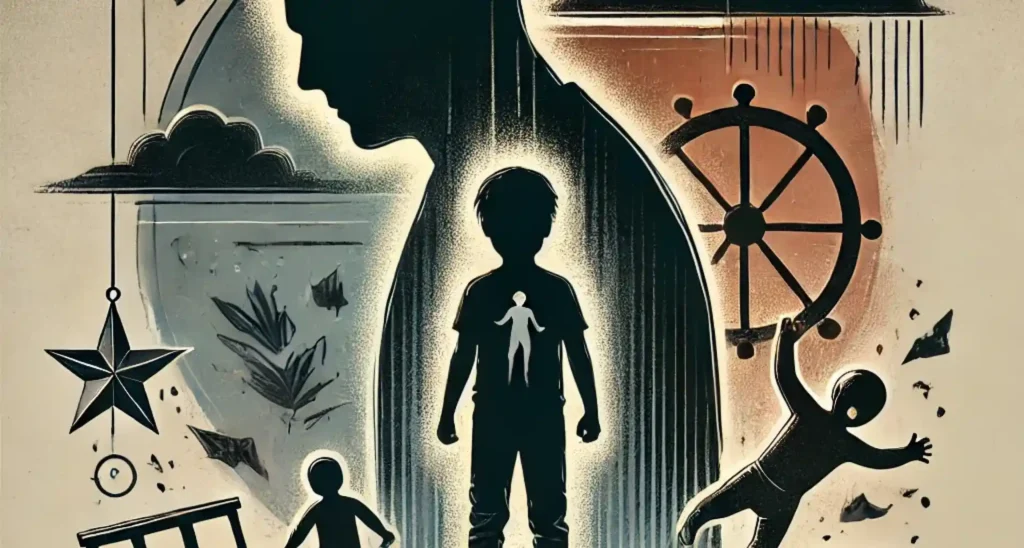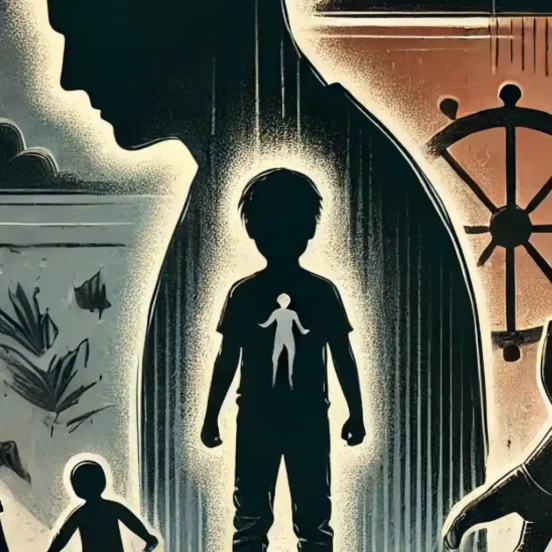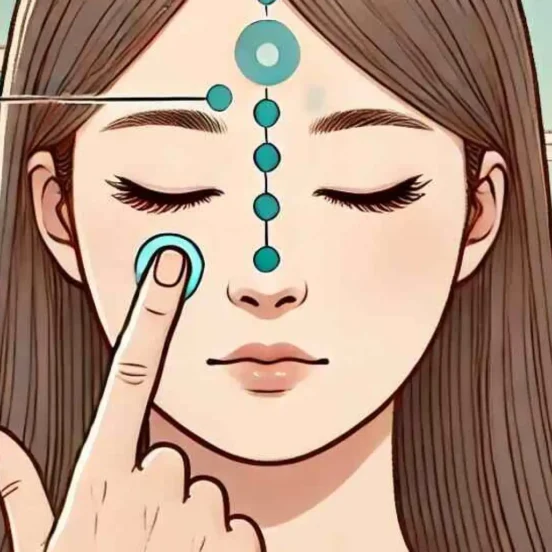Understanding Childhood Trauma in Adults: A Comprehensive Guide
Childhood trauma, often stemming from experiences like abuse, neglect, or the loss of a loved one, can cast a long shadow over a person’s life. While some may believe that the passage of time heals all wounds, research suggests that the impact of childhood trauma can persist well into adulthood, influencing mental, emotional, and even physical health.
Studies have shown that adults who experienced trauma in their formative years are at a higher risk for chronic conditions such as depression, anxiety, and PTSD. Furthermore, the effects of early trauma can extend to difficulties in forming healthy relationships and achieving overall life satisfaction.
This underscores the importance of understanding and addressing the lasting impacts of childhood trauma to foster better long-term well-being.
What is Childhood Trauma?
Childhood trauma refers to distressing experiences that a child goes through, which can have lasting negative effects on their emotional and psychological well-being. These experiences can include physical, emotional, or sexual abuse, neglect, exposure to domestic violence, severe accidents, natural disasters, or the loss of a loved one.
During these formative years, a child’s brain and emotional state are highly malleable, making them particularly vulnerable to the impact of traumatic events. The severity and duration of trauma can vary, but without proper intervention and support, the effects can extend far into adulthood, shaping an individual’s mental health, behavior, and ability to form healthy relationships.
How Does Childhood Trauma Show Up in Adults?
The effects of childhood trauma can manifest in numerous ways during adulthood, often impacting mental health, behavior, and overall well-being. Adults who have experienced childhood trauma may struggle with chronic anxiety, depression, or post-traumatic stress disorder (PTSD). These individuals might also exhibit heightened emotional reactivity, difficulty regulating emotions, and a pervasive sense of fear or distrust.
Behaviorally, they might engage in self-destructive actions such as substance abuse or encounter difficulties in maintaining stable relationships. Physical symptoms can also be present, including chronic pain, gastrointestinal issues, and increased susceptibility to illnesses due to a compromised immune system.
Recognizing these signs is crucial for seeking appropriate treatment and support to mitigate the long-term effects of childhood trauma.
What Causes Childhood Trauma?
Childhood trauma can arise from a variety of distressing experiences that significantly disrupt a child’s sense of safety and well-being. These events can be acute, such as a single incident, or chronic, involving prolonged exposure to adverse conditions. The causes of childhood trauma are diverse and can stem from different aspects of a child’s environment, interactions, and life experiences.
Common causes of childhood trauma include:
- Physical Abuse: Infliction of physical harm or injury by a caregiver or another individual.
- Emotional Abuse: Persistent verbal assaults, humiliation, or other forms of psychological maltreatment.
- Sexual Abuse: Involvement in sexual activities that a child cannot comprehend or consent to.
- Neglect: Failure to provide necessary care, supervision, affection, or support.
- Domestic Violence: Exposure to violence or severe conflict within the home.
- Severe Accidents or Illnesses: Experiencing or witnessing life-threatening events or severe medical conditions.
- Natural Disasters: Experiencing events such as earthquakes, hurricanes, or floods.
- Loss of a Loved One: The death of a parent, sibling, or close family member.
- Community Violence: Exposure to violent acts within the community, such as shootings or gang violence.
- Parental Substance Abuse: Living in an environment where caregivers are dependent on drugs or alcohol.
Symptoms of Childhood Trauma in Adults
The symptoms of childhood trauma in adults can be pervasive and multifaceted, often affecting various aspects of an individual’s life. These symptoms can manifest emotionally, psychologically, and physically, making it essential to recognize them for appropriate intervention and support. Adults dealing with the aftermath of childhood trauma may experience persistent challenges that impact their daily functioning and overall quality of life.
Common symptoms of childhood trauma in adults include:
Emotional Dysregulation: Difficulty managing and expressing emotions, leading to frequent mood swings, irritability, or intense emotional reactions.
Chronic Anxiety and Depression: Persistent feelings of fear, worry, sadness, or hopelessness that can interfere with daily activities and mental health.
Post-Traumatic Stress Disorder (PTSD): Experiencing flashbacks, nightmares, or intrusive thoughts related to the traumatic event, often accompanied by heightened arousal and avoidance behaviors.
Difficulty in Relationships: Struggles with forming or maintaining healthy, trusting relationships due to fear of abandonment or betrayal.
Self-Destructive Behaviors: Engaging in harmful activities such as substance abuse, self-harm, or reckless behavior as a way to cope with emotional pain.
Low Self-Esteem and Shame: Persistent feelings of worthlessness, guilt, or shame stemming from the trauma.
Physical Symptoms: Chronic pain, gastrointestinal issues, headaches, or other stress-related health problems.
Dissociation: Feeling detached from oneself or reality, experiencing memory lapses, or having out-of-body experiences.
Hypervigilance: Being overly alert and easily startled, constantly scanning the environment for potential threats.
Sleep Disturbances: Insomnia, nightmares, or restless sleep patterns that disrupt overall health and well-being.
How Does Childhood Trauma Affect Quality of Life?
Childhood trauma can significantly impact an individual’s quality of life, often leading to long-term emotional, psychological, and physical challenges. Adults who experienced trauma during their formative years may struggle with maintaining stable relationships, achieving academic and career success, and managing their mental and physical health.
The persistent stress and anxiety associated with unresolved trauma can diminish overall life satisfaction, leading to feelings of hopelessness and decreased motivation. Moreover, the chronic nature of these effects can create a cycle of negative outcomes, further exacerbating the individual’s ability to lead a fulfilling and productive life.
Understanding the profound impact of childhood trauma on quality of life is essential for developing effective interventions and support systems to help affected individuals thrive.
How to Treat Childhood Trauma in Adults?
Treatment for childhood trauma in adults involves a multifaceted approach that addresses the emotional, psychological, and physical effects of past traumatic experiences. Effective treatment often includes therapy, medication, lifestyle changes, and support networks to help individuals process their trauma and build resilience.
Cognitive Behavioral Therapy (CBT)
Cognitive Behavioral Therapy (CBT) is a highly effective treatment for childhood trauma in adults. CBT focuses on identifying and changing negative thought patterns and behaviors that have developed as a result of trauma.
Through structured sessions, individuals learn to challenge and reframe their thoughts, leading to healthier emotional responses and behaviors. This therapy helps patients develop coping strategies to manage anxiety, depression, and PTSD symptoms, ultimately improving their overall mental health and quality of life.
Eye Movement Desensitization and Reprocessing (EMDR)
Eye Movement Desensitization and Reprocessing (EMDR) is a specialized therapeutic approach designed to alleviate the distress associated with traumatic memories. This treatment for childhood trauma in adults involves guided eye movements or other forms of bilateral stimulation while recalling traumatic events.
This process helps to reprocess and integrate traumatic memories, reducing their emotional intensity and negative impact. EMDR has been shown to be particularly effective for individuals with PTSD and other trauma-related conditions.
Mindfulness and Meditation
Mindfulness and meditation practices can be powerful tools for individuals dealing with the effects of childhood trauma. These techniques involve focusing on the present moment and cultivating a non-judgmental awareness of thoughts, feelings, and bodily sensations.
Regular mindfulness practice can help reduce stress, improve emotional regulation, and enhance overall well-being. Incorporating mindfulness into treatment for childhood trauma in adults can provide a sense of calm and stability, aiding in the healing process.
Medication Management
Medication management is sometimes necessary as part of the treatment for childhood trauma in adults, especially when symptoms of anxiety, depression, or PTSD are severe. Antidepressants, anti-anxiety medications, and mood stabilizers can help manage these symptoms, making it easier for individuals to engage in therapeutic processes.
A healthcare provider can work with patients to find the most effective medication regimen, monitor for side effects, and adjust treatment as needed.
Support Groups
Support groups offer a sense of community and shared experience for individuals dealing with childhood trauma. These groups provide a safe space to share personal stories, gain insights from others facing similar challenges, and receive emotional support.
Participating in a support group can reduce feelings of isolation, foster a sense of belonging, and encourage healing through collective understanding and empathy.
Art and Music Therapy
Art and music therapy are creative approaches to treatment for childhood trauma in adults that allow individuals to express their emotions in non-verbal ways. Through artistic activities or music, patients can explore their feelings, reduce stress, and process traumatic experiences. These therapies can be particularly beneficial for those who find it difficult to articulate their emotions through traditional talk therapy.
Physical Activity and Exercise
Physical activity and exercise play a crucial role in the holistic treatment of childhood trauma in adults. Regular exercise can help reduce symptoms of depression and anxiety, improve mood, and boost overall physical health.
Activities such as yoga, tai chi, or simply walking can also promote mindfulness and relaxation, contributing to emotional stability and resilience.
Lifestyle Changes and Self-Care
Adopting healthy lifestyle changes and self-care practices is essential for individuals recovering from childhood trauma. This includes maintaining a balanced diet, ensuring adequate sleep, setting boundaries, and engaging in activities that bring joy and fulfillment.
Self-care practices such as journaling, spending time in nature, and nurturing relationships can help individuals build a supportive and nurturing environment conducive to healing and growth.
Best Type of Therapy for Childhood Trauma
When it comes to healing childhood trauma in adults, one of the best types of therapy is Eye Movement Desensitization and Reprocessing (EMDR). EMDR is specifically designed to address the distressing memories and emotional impacts of trauma.
This therapeutic approach involves guided eye movements or other forms of bilateral stimulation while the individual recalls traumatic events, helping to reprocess and integrate these memories more adaptively.
Studies have shown that EMDR can significantly reduce the symptoms of PTSD and other trauma-related conditions, making it a highly effective method for healing childhood trauma in adults.
Its structured yet flexible framework allows therapists to tailor the treatment to each individual’s unique experiences and needs, fostering a path toward recovery and emotional well-being.
Closing Note
Childhood trauma in adults manifests in various emotional, psychological, and physical symptoms that can significantly impact the overall quality of life. Recognizing the lasting effects of such trauma is essential for providing effective treatment and support.
Therapeutic approaches like CBT, EMDR, mindfulness, and creative therapies, along with lifestyle changes and support networks, play a crucial role in healing childhood trauma in adults. By addressing these deep-seated issues, individuals can work towards a healthier, more fulfilling life, breaking free from the shadows of their past.















